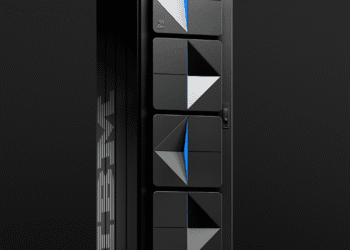Pradyut Mohan Dash, CTO of CSM Tech
Date – 3rd June 2024
In a rapidly evolving landscape of artificial intelligence (AI), a transformative paradigm known as Edge AI is redefining the way we process and utilize data. Edge AI represents the fusion of AI capabilities with edge computing, bringing intelligence directly to the source where data is generated. Unlike traditional AI frameworks that rely on centralized cloud infrastructure, Edge AI empowers devices to make autonomous, real-time decisions without constant reliance on external connectivity.
Edge computing is a method that enables data analysis and response at the source point, which results in faster and more efficient performance. This approach is decentralized, which means that it reduces privacy concerns by minimizing the need for data transmission to external servers. As we explore the world of Edge AI, its unique benefits and applications become more evident, promising a future where intelligent systems are effortlessly integrated into our daily lives.
What is Edge AI?
Edge Artificial Intelligence (AI), also known as AI at the edge, refers to the integration of artificial intelligence in an edge computing environment. This allows computations to be performed close to the location where data is collected, instead of relying on a centralized cloud computing facility or an offsite data centre. With Edge AI, devices can make quicker and more intelligent decisions without the need to connect to the cloud or offsite data centres.
Edge computing is a technology that enables data storage to be closer to the device location. AI algorithms can process the data that the device creates, even without an internet connection. This approach allows for real-time feedback, with data being processed within milliseconds. Edge AI can deliver almost instant responses, making it a more secure option, especially when sensitive data does not leave the edge.
Edge devices such as sensors and IoT devices are becoming key technologies due to their ability to move data away from overburdened cloud data centres.
How is Edge AI different from traditional AI?
Edge AI is different from the traditional AI application framework where the data generated by connected technologies is transmitted to a backend cloud system. Instead of running AI models at the backend, they are configured onto processors inside the connected devices operating at the network edge. This adds a layer of intelligence at the edge where the edge device not only collects metrics and analytics but can act upon them since there is an integrated machine learning (ML) model within the edge device making a true AI at the edge.
The goal of artificial intelligence stays the same — to build smart machines that work and perform tasks that humans normally do without human oversight. However, edge AI does the work and decision-making locally, inside or near whatever device is being used.
How Edge AI is beneficial?
The combination of edge computing and artificial intelligence comes with great benefits. With edge AI, high-performance computing capabilities are brought to the edge, where sensors and IoT devices are located. Users can process data on devices in real time because connectivity and integration between systems isn’t required, and they can save time by aggregating data, without communicating with other physical locations.
The benefits of edge AI include:
- Privacy: EdgeAI operations involve carrying out a significant portion of data processing on a device located at the edge of a network. This reduces the amount of data that is transmitted to external locations like the cloud. As a result, the risk of data being mishandled or misused is minimized. However, this does not imply that the data is completely secure from hackers and other security threats. To address these concerns, the Trusted Platform Group has developed the TPM 2.0 hardware security standard which ensures that edge devices have secure data storage, encrypted authentication, and data integrity auditing.
- Scalability: Easily scale systems with cloud-based platforms and native edge capability on original equipment manufacturer (OEM) equipment
- Reduced latency: Reduce the load on the cloud platform by locally analyzing data, freeing it for other analytics tasks.
- Using Less Power: Edge AI is a technology that processes data locally. This method is energy-efficient and cost-saving because edge computing devices are designed to consume power efficiently. As a result, the power requirements for running AI at the edge are much lower compared to cloud data centres.
- Reduction In Internet Bandwidth and Cloud Costs: Edge AI does most of its data processing locally, sending less data over the Internet and thus saving a lot of Internet bandwidth. Also, the cost of cloud-based AI services can be high. Edge AI lets you use expensive cloud resources as a post-processing data store that collects data for future analysis, not for real-time field operations.
Edge AI Use Cases and Applications
There is a wide range of Edge AI applications. Notable examples include facial recognition and real-time traffic updates on semi-autonomous vehicles, connected devices, and smartphones. Additionally, video games, robots, smart speakers, drones, wearable health monitoring devices, and security cameras are all starting to support Edge AI.
Here are a few areas where Edge AI will grow in usage and importance:
- Security camera detection processes—Traditional surveillance cameras typically record hours of footage, which is then stored and used as needed. However, with Edge AI technology, the algorithmic process takes place on the camera system itself in real-time. This allows the camera to promptly detect and handle any suspicious activity as it occurs, resulting in a more efficient and cost-effective surveillance service.
- Image and video analysis—Edge AI can be used for automated responses to audio-visual stimuli in robots and real-time recognition of spaces and scenes.
- Improve the effectiveness of the Industrial Internet of Things (IIoT)— AI algorithms can monitor and detect potential defects and errors in the production chain, allowing for real-time adjustments to production processes.
A decentralised approach:
Edge AI is a decentralized approach that combines edge computing and AI to offer benefits such as reduced latency, scalability, enhanced energy efficiency, and cost savings. It has versatile applications in several sectors, including security surveillance, industrial automation, and personalized healthcare.
Edge AI has the potential to revolutionize technology and our daily lives. However, we must remain vigilant in addressing security challenges and optimizing infrastructure to maximize its capabilities.





















